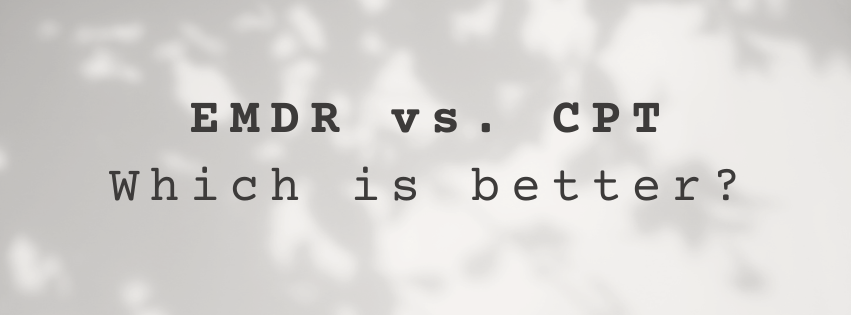When it comes to trauma therapy, it’s easy to feel overwhelmed by all the options. Two of the most evidence-based and widely recommended treatments for trauma and post-traumatic stress disorder (PTSD) are Eye Movement Desensitization and Reprocessing (EMDR) and Cognitive Processing Therapy (CPT). At Barksdale Missions, we often get asked, “Which one is better?” The truth is—they’re both effective. But they’re different. Knowing which approach fits best depends on the individual, history, and treatment goals.
What Is EMDR?
EMDR is a structured therapy that uses bilateral stimulation (usually eye movements, but sometimes tapping or tones) to help the brain reprocess traumatic memories. Developed by Francine Shapiro in the late 1980s, EMDR doesn’t require the client to talk in detail about the event. Instead, the focus is on how the memory is stored and experienced in the brain and body.
Sessions often involve the therapist guiding the client through moments of remembering the trauma while simultaneously using bilateral stimulation. This process is thought to mimic what happens during REM sleep, allowing the brain to naturally process and store emotional experiences more adaptively.
What Is CPT?
CPT is a structured form of cognitive-behavioral therapy (CBT) that focuses on the beliefs and thoughts a person develops as a result of trauma. Developed by Dr. Patricia Resick, CPT helps individuals identify “stuck points”—rigid, unhelpful thoughts about themselves, others, or the world (e.g., “I should have done something to stop it” or “I can’t trust anyone”). Through cognitive restructuring, journaling, and skill-building, CPT guides clients toward more balanced and realistic thinking.
CPT often includes writing about the trauma and reflecting on how it has affected one’s beliefs about safety, control, trust, esteem, and intimacy.
Side-by-Side Comparison
| Feature | EMDR | CPT |
|---|---|---|
| Primary Focus | Reprocessing traumatic memories with bilateral stimulation | Challenging and reframing trauma-related thoughts |
| Session Style | Brief trauma recall paired with eye movements or tapping | Talking and writing about trauma, using structured worksheets |
| Client Involvement | Minimal verbal processing; focus on emotions and body | High cognitive engagement; homework and written reflection |
| Homework | Not typically assigned | Assigned regularly (e.g., impact statement, stuck point logs) |
| Best for Clients Who… | Struggle to talk about trauma or feel emotionally overwhelmed | Prefer cognitive structure and want to understand their trauma |
| Common Applications | PTSD, complex trauma, somatic symptoms, phobias, grief | PTSD, moral injury, childhood trauma, shame and guilt |
| Training Required | EMDRIA-approved certification for clinicians | Formal training recommended; not mandatory to practice CPT |
| Evidence Base | Strong support from APA, VA/DoD, WHO | Equally supported and widely studied |
Which One Should You Choose?
It depends.
- EMDR is ideal for people who experience intense body responses, dissociation, or emotional flooding when recalling trauma. It’s also helpful for clients who don’t want to talk about their trauma in detail but want relief from its emotional impact.
- CPT works well for clients who want to make sense of their experiences. It’s especially effective when shame, guilt, or rigid beliefs are core components of the trauma response.
Some clients benefit from a combination of both approaches at different points in their healing journey.
Final Thoughts
Both EMDR and CPT are excellent tools for trauma recovery. The best choice depends on the individual’s needs, preferences, and how their trauma is showing up in their life.
References
American Psychological Association. (2017). Clinical practice guideline for the treatment of posttraumatic stress disorder (PTSD) in adults. https://www.apa.org/ptsd-guideline
Resick, P. A., Monson, C. M., & Chard, K. M. (2017). Cognitive processing therapy for PTSD: A comprehensive manual. The Guilford Press.
Shapiro, F. (2018). Eye movement desensitization and reprocessing (EMDR) therapy: Basic principles, protocols, and procedures (3rd ed.). The Guilford Press.
U.S. Department of Veterans Affairs. (2023). PTSD treatment decision aid. https://www.ptsd.va.gov/understand_tx/tx_basics.asp
